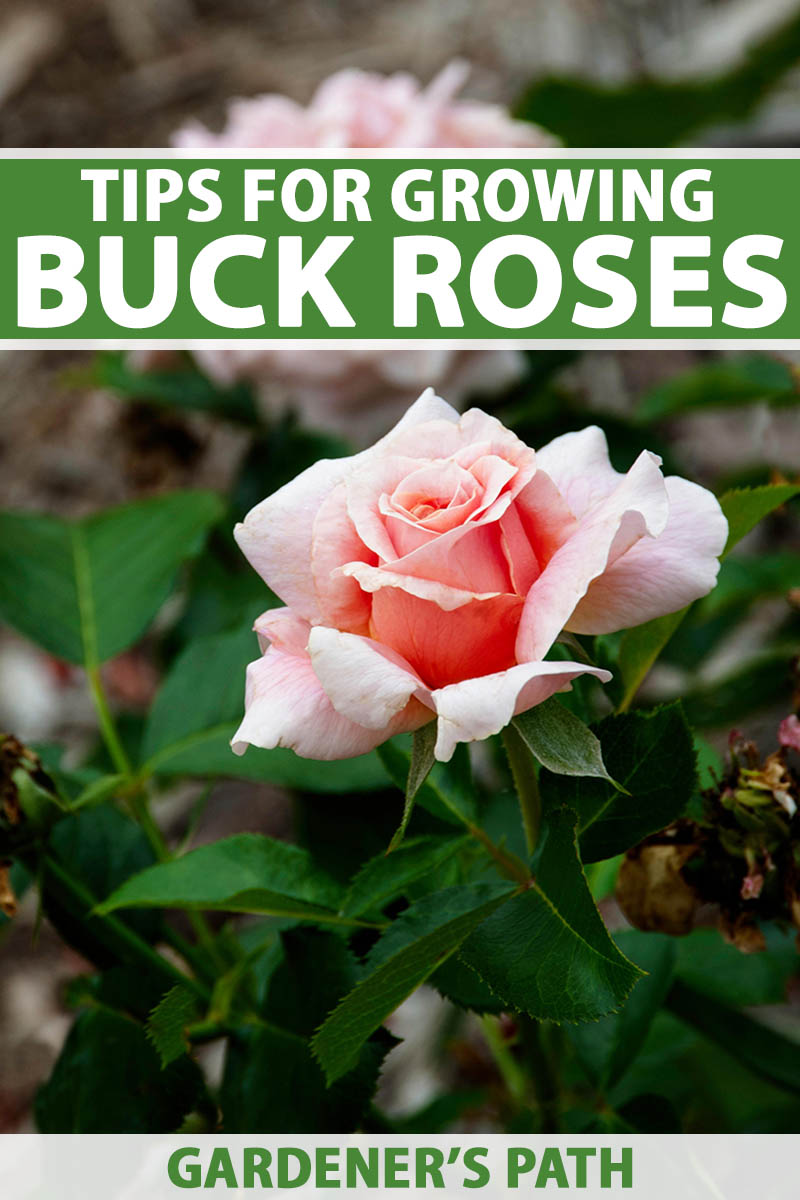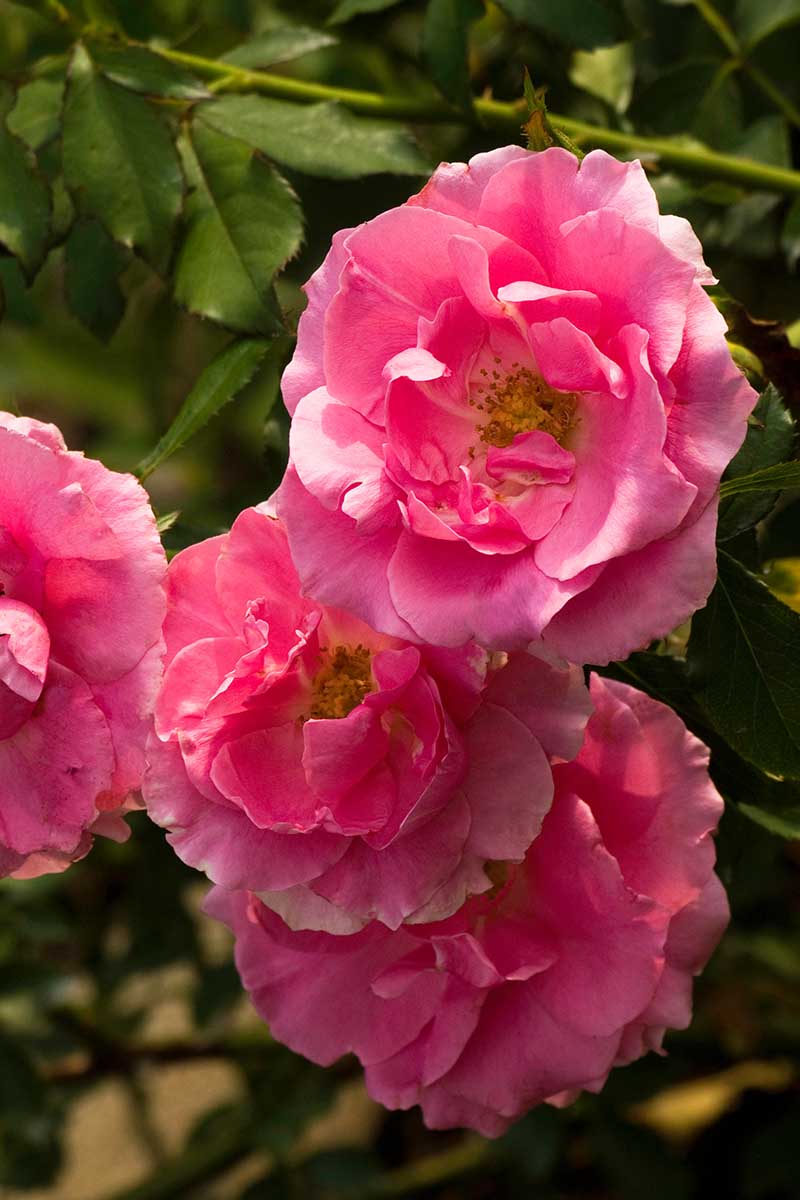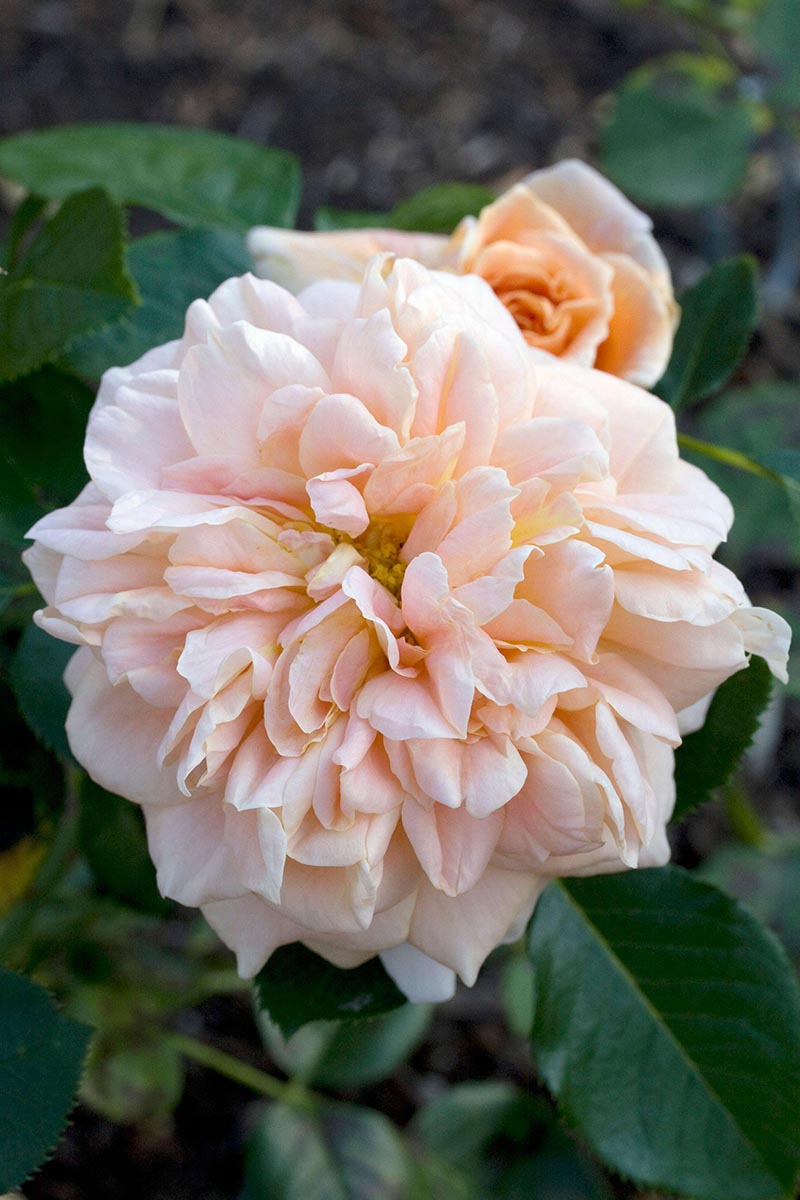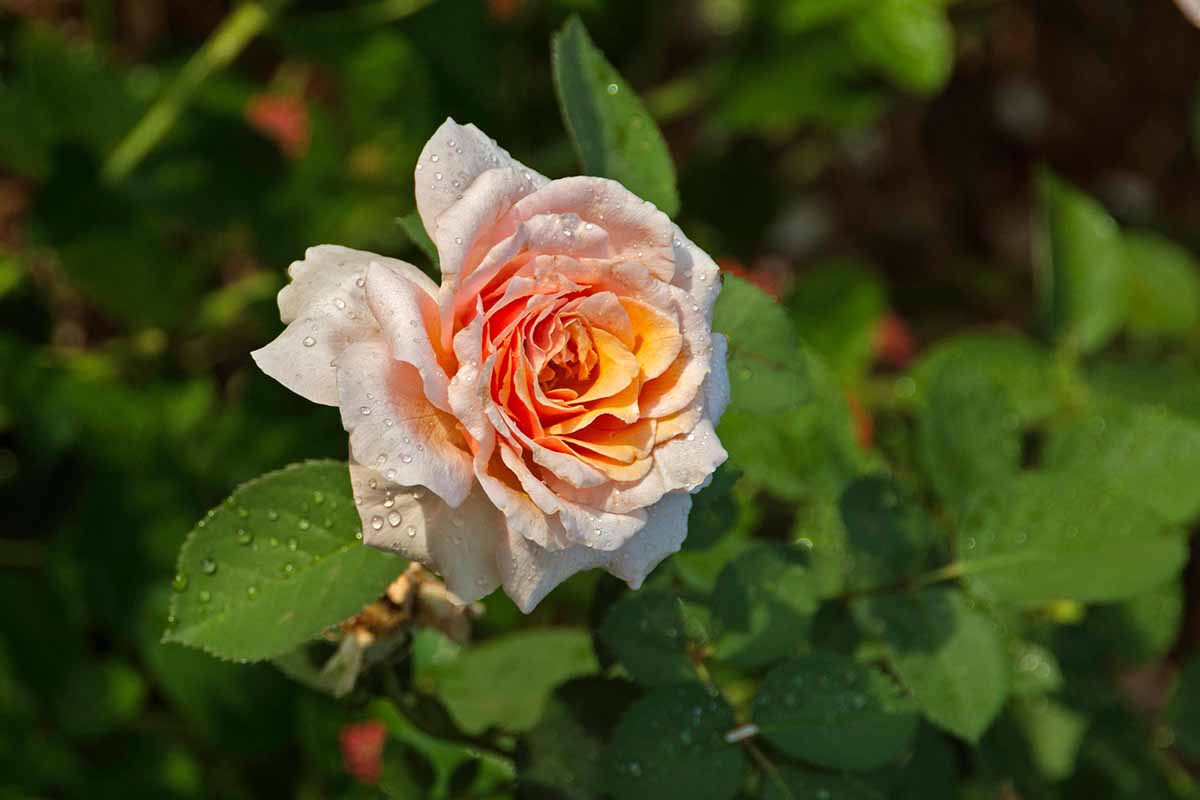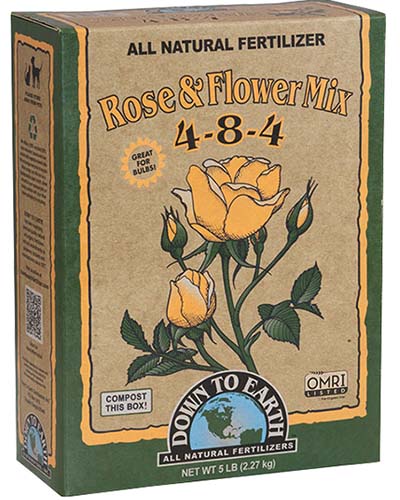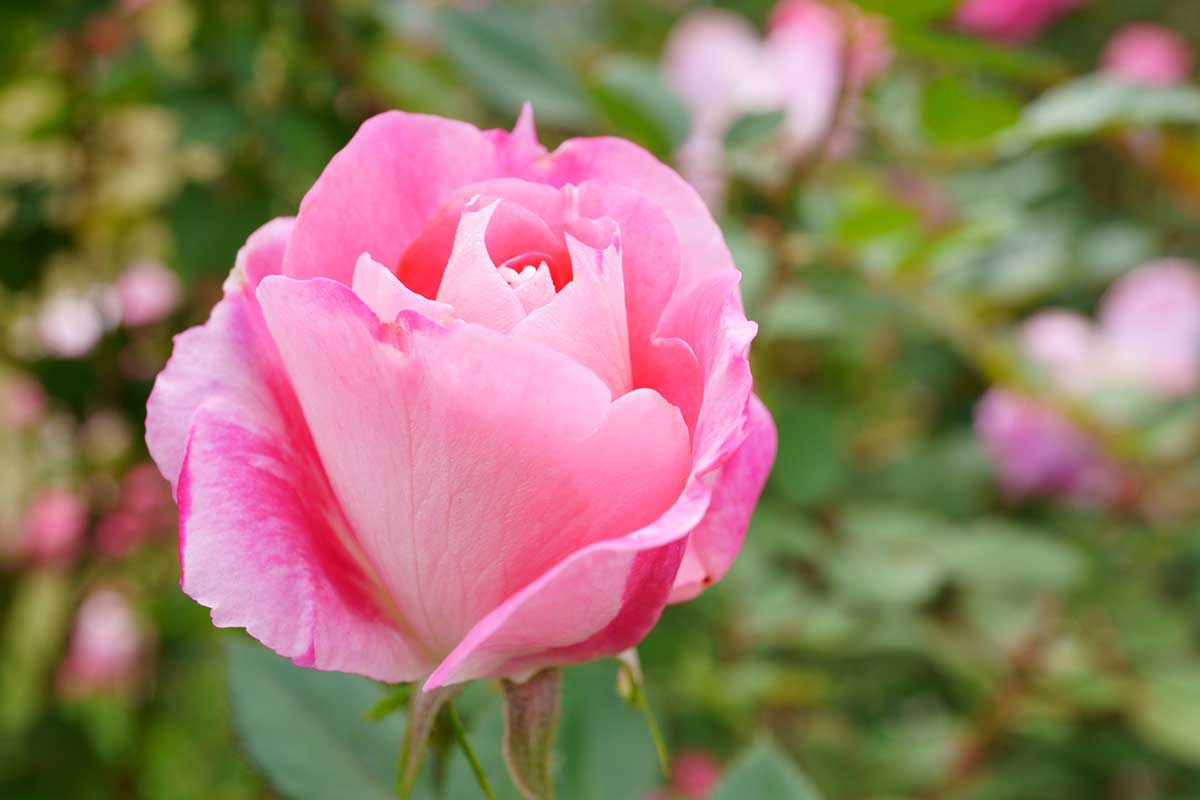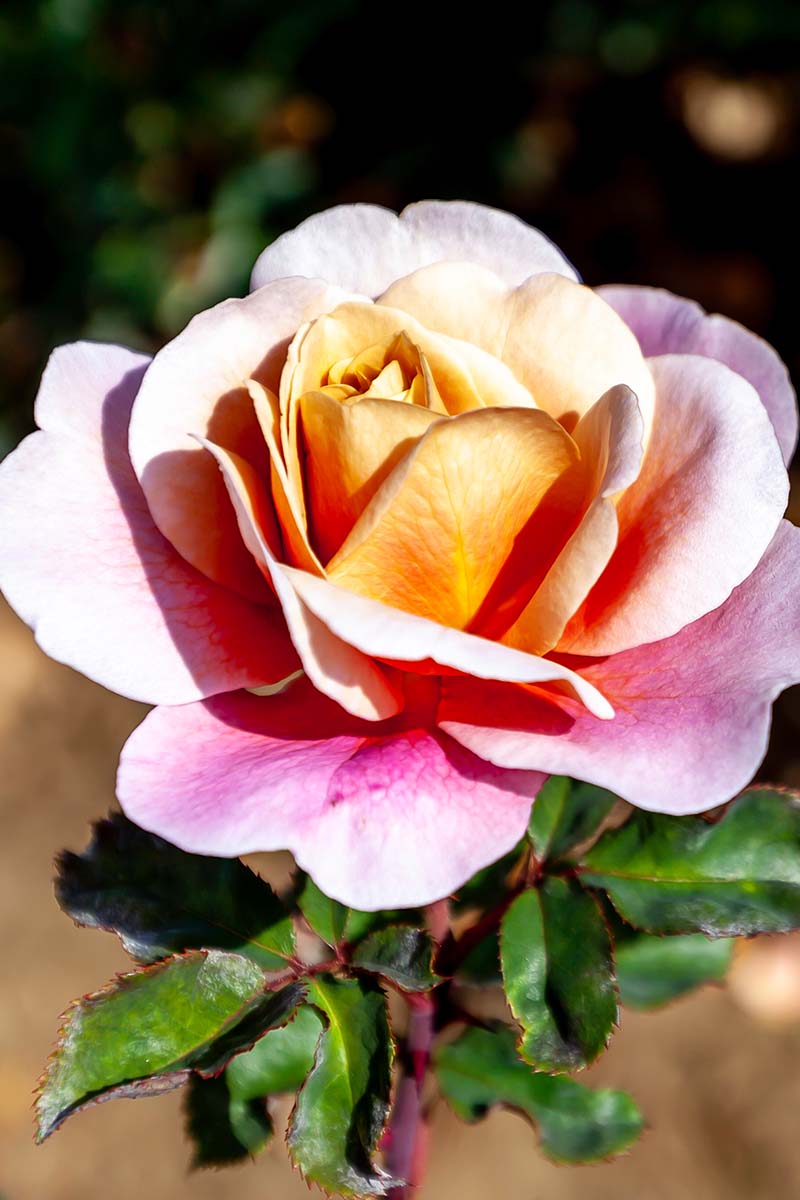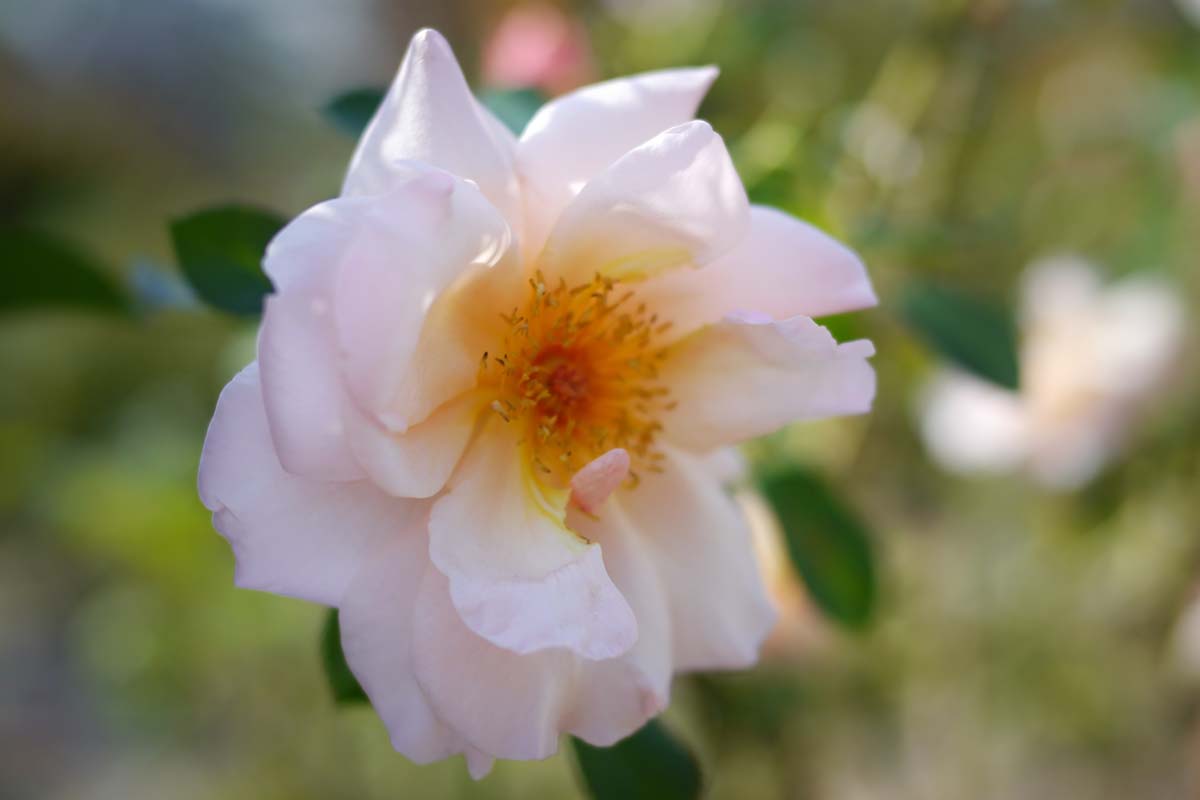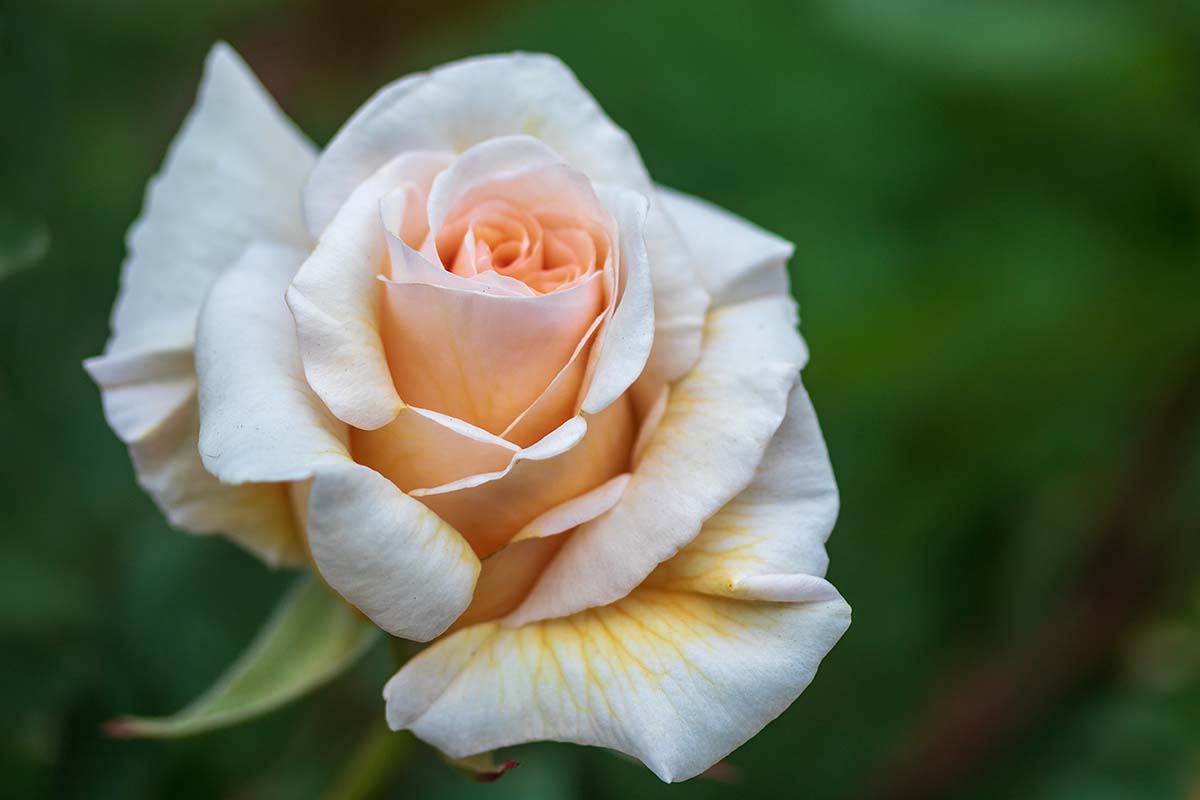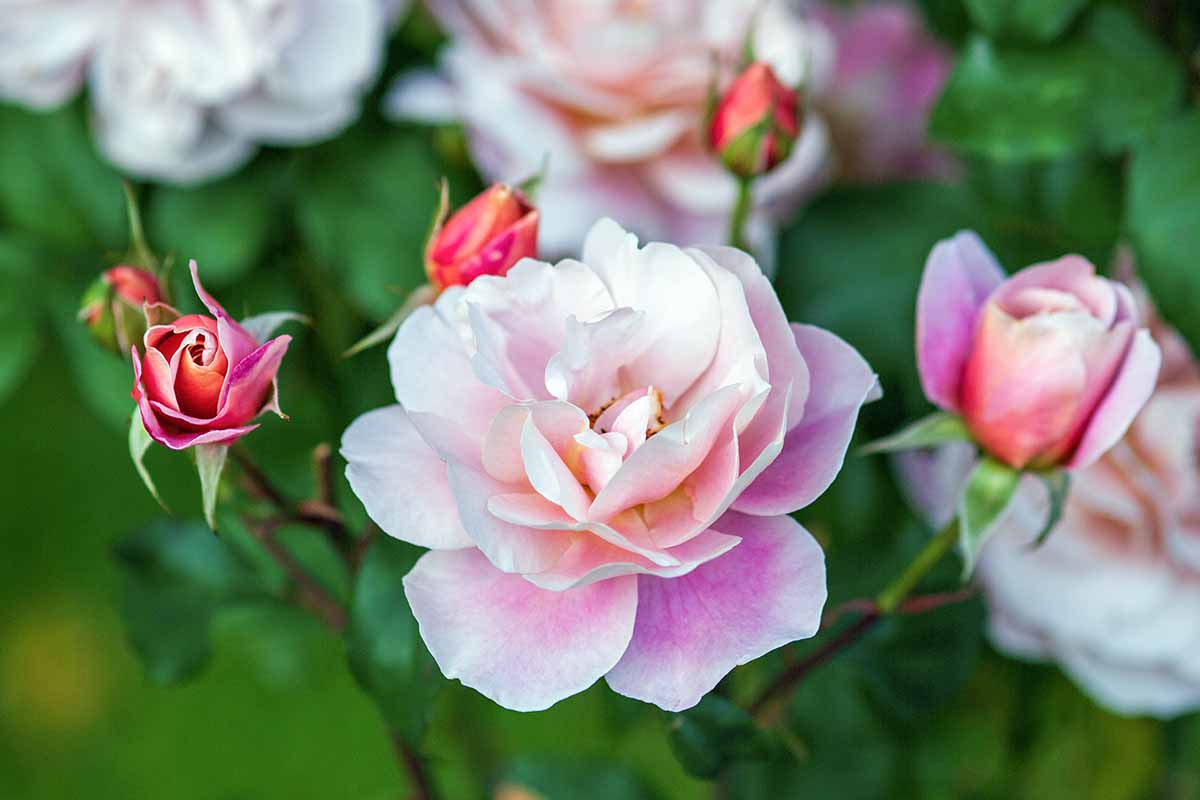That boy went on to become one of the most famous breeders of hardy roses that the world has ever known. Oh, and by the way, this man was allergic to his beloved shrubs and had to routinely take shots to be able to work with the flowers that would make him (somewhat) famous. Did you guess that this respected breeder is David Austin? Or maybe that guy who invented Knock Out roses? Nope, the hero of this story is Griffith Buck, a professor, and horticulturist who wanted to combine the hardiness and toughness of wild roses with the beauty of cultivated ones. We link to vendors to help you find relevant products. If you buy from one of our links, we may earn a commission. Don’t worry if you’re not totally familiar with Buck or his flowers already. He flew quietly under the radar but he left behind an outsized legacy. We’ll talk about him, his exceptional roses, and more. Here’s what’s coming up: If you live in a region that is colder than most roses prefer, you should get to know these shrubs. Heck, if you just want more disease-resistant, hardy options with blossoms that are more elegant than what Knock Outs have to offer, you’re in the right place.
Who Is Griffith Buck?
Young Griffith Buck was born in Cincinnati, Ohio, and took an interest in roses while in high school in Rockford, Illinois. On assignment to find a pen pal in Spain, he reached out to rosarian Pedro Dot. Through his niece Maria Antonia, Dot mentored the youngster in hybridizing and growing roses and the three remained friends for decades. His passion for the Rosa genus didn’t fade when he reached adulthood. After serving in the US Army, he earned his Ph. D. in horticulture and microbiology. The now Dr. Buck started teaching and eventually held tenure at Iowa State University (ISU), and from 1948 to 1985, he bred and developed about 90 cultivars. To reach this impressive milestone, he worked with not only Dot but the famous rose breeder Wilhelm Kordes. Kordes sent him a hybrid that acted as the basis for much of his early work. The good doctor rarely patented his successes – only five were patented during his lifetime – and often generously gave them away. Sadly, none of his efforts gained wide commercial recognition while he was alive and the University passed on continuing his impressive work, despite the fact that he was given numerous awards for his roses. They were more focused on commercial crops like corn than ornamentals. Despite this lack of interest from the University, during his life, he received Merit and Honor Awards from the Iowa State Horticultural Society, several All American Rose Selections awards, and the Texas Rose Research Foundation Award. After he retired at the age of 70, his breeding stock was destroyed. He passed away in 1991 at the age of 75. The story could have ended there, were it not for the women in his life who helped bring his work to the world. In addition to Maria Antonia, his wife Ruby, daughter Mary, and Minnesota professor and horticultural scientist Kathy Zuzek decided that his work needed to be carried on. They rounded up as many of the flowers in his personal collection as they could. Additionally, others who had received cuttings from Buck over the years offered up their specimens to the Minnesota Arboretum, which cataloged the collection. While many of his creations have been preserved, there are several “lost” cultivars that rose lovers are seeking in order to catalog and further refine, showing just how enduring his legacy is. Many new hybrids have since been created using his cultivars and his creations are grown in a place of honor at the ISU Reiman Gardens. Today, the shrubs he planted in his family garden continue to bloom (even though many are now growing in nearly full shade thanks to nearby trees) and show off his legacy. You can also find many of the cultivars he created at local nurseries across the country, and a few have even achieved commercial success.
Cultivation and History
When Buck started breeding, commercial growers looked for shrubs with long stems and big blossoms to be used for cutting. At the same time, if someone wanted a repeat bloomer or something that resisted most pests and diseases, they had to choose one that wasn’t very cold hardy, or that didn’t have impressive double blossoms. There was a gap in the market for plants that had that dramatic Old World look with an impressive scent and hardiness, and he was way ahead of other breeders in trying to find that perfect intermediary. Later breeders would aim for (and find) commercial success, but Buck was working hard simply for the love of it. Buck decided that one must-have characteristic was the ability to survive an Iowa winter unprotected. He wanted to create shrubs that were happy in the Midwest. If it couldn’t survive, it wasn’t worth exploring. To achieve his goals, he used cold-hardy repeat-blooming Siberian roses (R. laxa), which very few horticulturists were using in their breeding programs at the time. But he didn’t like how long these cultivars took to start flowering. By the time they sent out blooms, other roses of the same age had been showing off for years. That’s when he started adding in the plants he received from Kordes, which bloomed earlier but lacked the cold hardiness he was looking for. The doctor wouldn’t treat any of his plants for pests or disease, so if they fell prey to problems, he discontinued them. Beyond breeding for flowers that would bloom much longer than hardy wild types, he also looked for pretty foliage. ‘Applejack’ was one of the first cultivars that he had good success with. It bloomed in the first year and could survive super cold winters. He named the rose after the heady apple scent that he noticed coming from the flower during its first blooming season. But he realized that the 15-foot stature of the pretty plant was too big for most home growers, so he began breeding smaller specimens. One of his first of these was ‘Wanderin’ Wind.’ He also created ‘Iowa Belle,’ ‘Prairie Princess,’ and ‘Prairie Star,’ the latter two marked the start of Buck’s prairie line of roses, with many other “prairie” named creations to come. From there, he continued to focus on pest and disease resistance. In the late 1970s, he bred ‘Carefree Beauty,’ which became one of his biggest commercial successes. Buck roses are classified as shrubs by the American Rose Society, but his cultivars can include tea hybrids or hybrids of antiques, old garden, and species roses.
How to Grow
The great thing about these roses is that they’re pretty straightforward to grow. While some Rosa species need extra-special attention and care when planting, these sturdy shrubs can practically be tossed in the yard and forgotten. Okay, not literally, but they’re very resilient thanks to their wild rose ancestry. They don’t need extra-careful planting, diligent pruning, and a constant watchful eye for signs of disease. To plant, dig a hole that is about the same size as the container they came in. It never hurts to dig a larger hole, but it’s not necessary. You should amend the soil if it is heavy clay or extremely sandy – but you probably already knew that. Compost is an excellent way to fix either type of soil, so work plenty in until your soil feels loose, rich, and loamy. Remove the plant from the container and place it in the hole. Fill in around it with soil and water well.
Cultivars to Select
Sadly, these roses aren’t widely available at major retailers, but you can often find them at local nurseries or at smaller online nurseries. Sometimes you can find cultivars without the name “Buck” attached, so it can be a challenge to find them. When it comes to fertilizing, it’s best to do it once a year in the fall. Wait until the buds and leaves have fallen off the plant. Then, apply a flower-specific fertilizer such as Down to Earth’s Rose & Flower mix, a personal favorite. Down to Earth Rose and & Flower Mix Arbico Organics carries this reliable staple in one-, five-, or 15-pound boxes. In USDA Growing Zones 5 and above, they don’t need any special protection, but some shrubs might need to be winterized in Zones below that. Check to see if your specific cultivar is hardy to Zone 3 or 4, as many are. Prune to shape and remove any diseased or dead canes in the early spring as the leaf buds are forming. Ideally, each shrub should have about five or six large, main canes. Remove any smaller or unproductive ones. While Buck never expressed a preference, his wife is fond of ‘Earth’s Song,’ a shrub that features bright pink double blossoms. Here are some of our favorites:
Blue Skies
Bred in ‘83, this hybrid tea has huge blossoms at five inches across with double petals that end in a tidy rounded point. The shrub grows up to four feet tall and three feet wide and is hardy to Zone 4. Rumor has it that Buck was never a big fan of this one, but ‘Blue Skies’ is about as close as you can get to true blue petals among roses on the market today, so it has become a beloved classic among rosarians.
Carefree Beauty
With semi-double blossoms in medium pink, it’s easy to see why this is one of his most commercially successful cultivars. It grows to five feet tall and wide and is covered in cheerful flowers that pop up all summer long, even in areas that drop down to -30°F. It’s truly carefree because it is self-cleaning, pest and disease resistant, and maintains a compact shape without pruning. The hips are a fantastic bright orange in the fall, so you can experience multi-season interest.
Distant Drums
‘Distant Drums’ often tops the list of favorite Buck roses. While it is worth having around just for the scent, which is pungent myrrh, the flowers are unlike anything else. Each four-inch blossom features bronze-apricot petals at the center that gradually fade to lavender on the exterior. They’re reminiscent of a setting sun over a Western desert, and your humble author’s personal favorite. Hardy to Zone 5.
Golden Unicorn
If you do a quick search for the most beloved Buck roses, ‘Golden Unicorn’ is sure to show up. This is no mythical creature, but a real-life yellow rose that is hardy, pest and disease resistant, and utterly magical, with golden and peach petals. Yellow roses have a bit of a reputation for being fussy, but not this beauty. Many Rosa lovers think of ‘Golden Unicorn’ as one of the best yellow options out there, especially since it does well all the way down to Zone 4 and the color doesn’t fade.
Iobelle
The beautiful hybrid tea ‘Iobelle’ was one of the first cultivars that Buck registered with the ARS. That it is still around and a popular option at nurseries should tell you that it’s a winner, and not just for the pure white blossoms with speckles of reddish pink at the edge of the petals. It’s reliably hardy down to Zone 4 and never seems to be bothered by pests or disease. It’s also almost prickle-free.
Quietness
‘Quietness’ speaks volumes without saying a word. The mild-mannered pale pink petals of each double blossom ring around a dense ruffle of medium pink petals at the center. All this on an unassuming three-foot tall and wide shrub that is hardy down to Zone 4, and completely unruffled by common rose diseases and pests.
Winter Sunset
The pale apricot and yellow of a winter sunset is captured perfectly by this rose. The compact shrub stays under four feet tall and is hardy down to Zone 5. It will bloom continuously from late spring until fall without any deadheading. I’d love to see more Bucks out there. They’re every bit as tough and hardy, though sometimes slightly less drought-resistant. They make up for that, however, with far more interesting blossom shapes and colors. If you’re looking for a rose that doesn’t demand lots of work and attention, don’t feel like you have to turn to the old reliable big box store options. There are so many more options out there to choose from, thanks to passionate breeders like Griffith Buck. Are you a convert? What cultivar are you growing? Where did you find it? Let us know in the comments! Then, if you’re looking for additional support in growing roses and you found this guide useful, you might want to check out some of our other guides next, starting with:
Growing Roses 101: Getting StartedHow to Plan a Rose Garden29 Roses with Few or No Thorns for Your GardenHow to Choose the Best Location to Grow Roses in Your Yard
